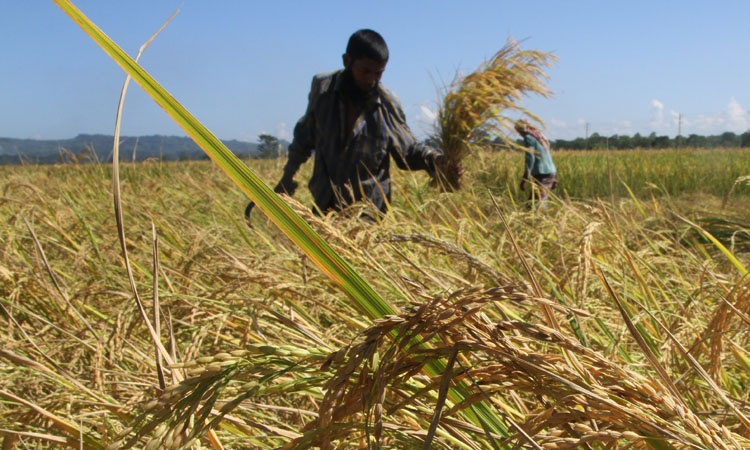News Flash
News Flash

CHATTOGRAM, Oct 17, 2025 (BSS) - More than 10,000 farmers in the Gumai Beel area of Rangunia upazila are cultivating dreams of a rich harvest this Aman season, as the vast paddy fields stretch endlessly in shades of vibrant green, swaying gently in the autumn breeze.
Known as the "granary of Chattogram," Gumai Beel has once again come alive with farming activity. This year, around 10,000 farmers have planted Aman rice across the fertile plains.
The seedlings, transplanted two and a half months ago, are now thriving and transforming the landscape into a lush green expanse, filling the farmers with optimism for a bumper yield.
According to the Upazila Agriculture Office, the cultivation target for Aman this season was set at 15,320 hectares, with government support provided in the form of quality seeds and fertilizers.
Of this, 3,450 hectares in Gumai Beel have been brought under Aman cultivation using improved varieties such as BRRI dhan-49, 51, 52, 75, 103, Katari, and White Paijam.
The fields are progressing well, with harvesting expected within one to one and a half months. Short-duration varieties like BRRI dhan-75, 103, and hybrid rice are likely to be ready for harvest within the next 20 days.
Last year, the average yield per hectare stood at 5.8 metric tons for high-yielding varieties and 3.8 metric tons for local ones. This season, cultivation has exceeded the target, buoyed by favorable market prices for paddy.
Farmer Faridul Islam of Gumai Beel said he has cultivated Aman on 120 kani (about 20.5 hectares) of land this year, investing around Tk 20,000 per kani from planting to harvest.
After accounting for labor costs and meals for workers, he expects additional expenses of Tk 800 to 1,000 per kani.
Sirajul Islam, another local farmer, who successfully cultivated Boro rice earlier this year, has now planted Aman on 45 kani of land.
Similarly, farmer Md. Obaidullah said he has invested Tk 55,000 per hectare on his five-hectare plot and expects the total cost to rise to about Tk 90,000 per hectare by harvest time. "The fields look healthy and promising. If nature favors us, we will have a very good yield this year," he added.
Deputy Assistant Agriculture Officer for Gumai Beel, Uttam Kumar Das, said that in previous years, Aman crops often suffered flood damage, but this year has been different.
"There have been no major natural calamities, and pest infestations have been kept under control through close monitoring," he said.
He added that farmers are now better equipped with information through online platforms and agriculture-based mobile apps.
"We have also adopted eco-friendly pest control measures, such as placing wooden poles in the fields to attract insect-eating birds, which has reduced pesticide use significantly," he said.
Balanced fertilizer use, row planting, and proper field management have further enhanced crop health. Additionally, light traps are being installed every Monday evening in each block to control harmful insects under official supervision.
Upazila Agriculture Officer Imrul Kayes said this year's Aman cultivation in Gumai Beel has been highly successful.
"Continuous field-level supervision, timely application of pest control, and eco-friendly farming practices, combined with the hard work of farmers, have created the right conditions for an excellent harvest," he noted.
"Farmers are receiving regular guidance and technical support, and we are hopeful that Gumai Beel will see one of its best Aman yields in recent years," Kayes added.